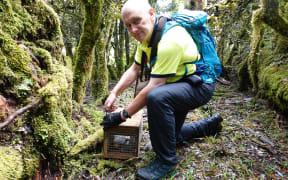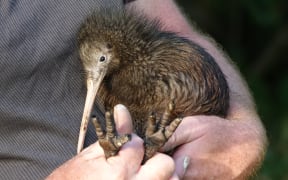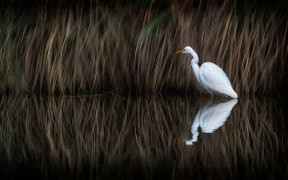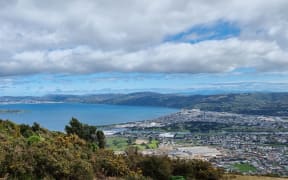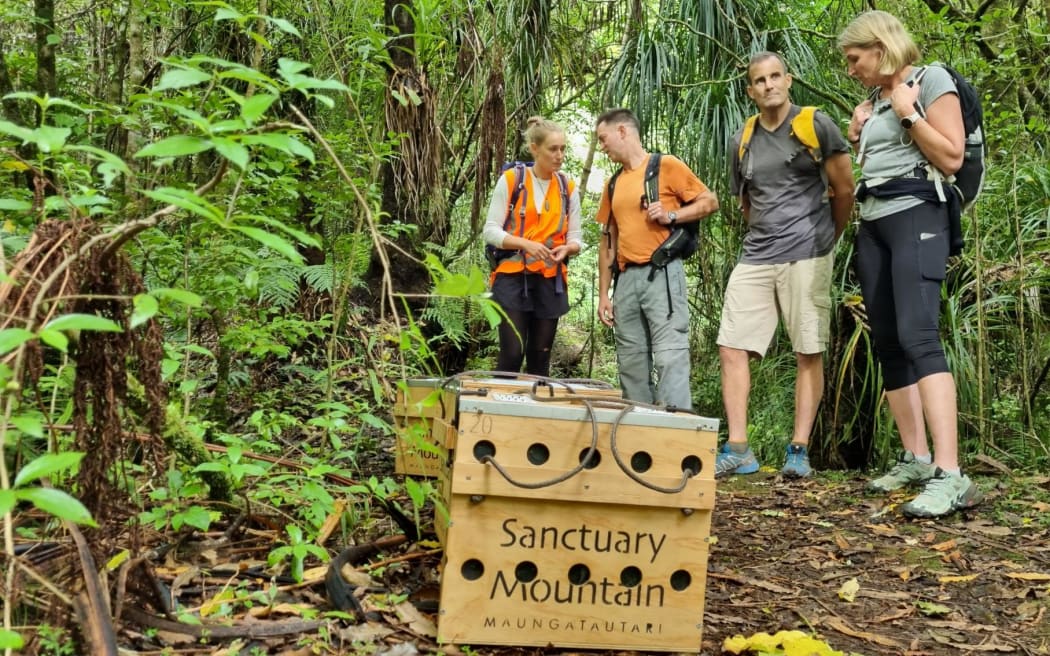
Volunteers prepare to take the kiwi into the bush at Kaitake. Photo: RNZ / Robin Martin
The release of about 40 kiwi into Te Papa-Kura-o-Taranaki - the former Egmont National Park - in the past week marks a step-change in attempts to re-establish the taonga on Taranaki Maunga.
About 110 kiwi are due to be released on Taranaki and Kaitake in the next few months, boosting the existing population while also relieving pressure on sanctuaries.
This week, 13 kiwi were released near Lucy's Gully on Kaitake, while a further 13 took to the bush on the western side of the range.
And 10 birds found a new home earlier on the southern side of Taranaki Maunga near the Stratford Mountain House.
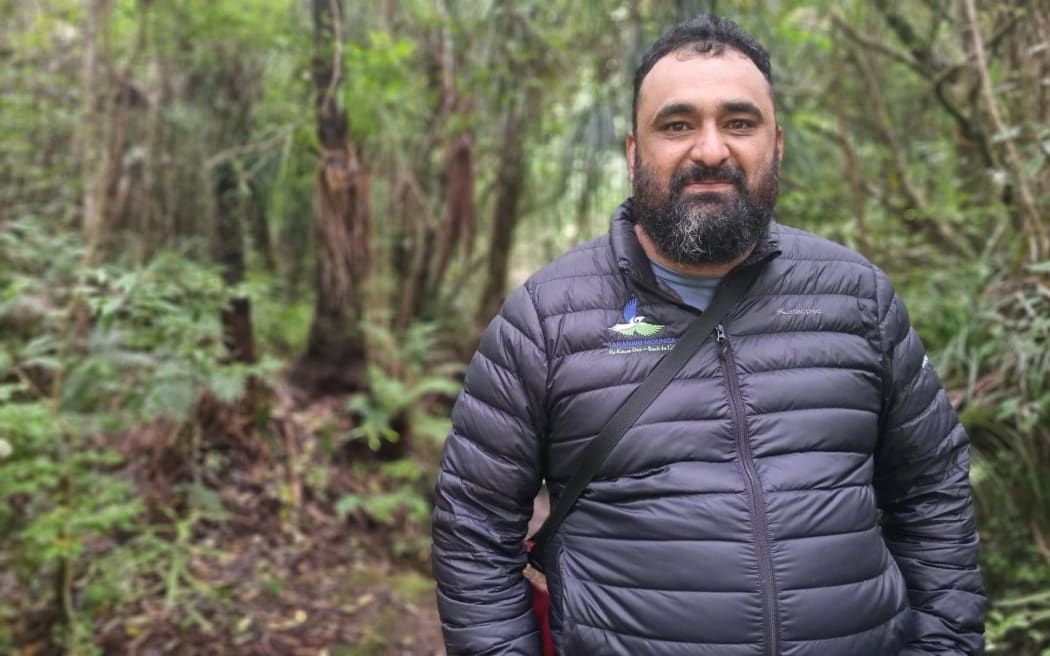
Pou Atawhai community engagement manager Taranaki Mounga Project Tāne Houston Photo: RNZ / Robin Martin
Tāne Houston, Pou Atawhai / community engagement manager at Taranaki Mounga Project, said it had been a momentous time.
"This is a huge day for us in Taranaki, or a huge few months at the moment in Taranaki.
"We are moving 110 kiwi to the mountain from both Rotokare and Maungatautari sanctuaries. That many birds being moved over three months is something that hasn't been done before."
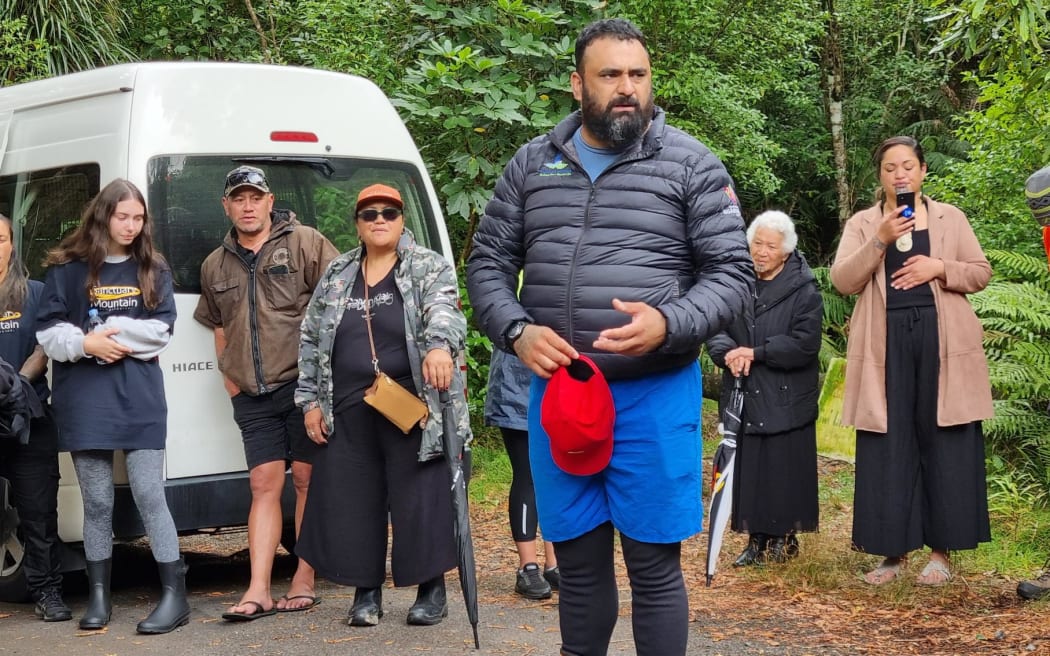
Tāne Houston addresses the gathering before the kiwi arrive. Photo: RNZ / Robin Martin
Houston said it was not only the national park that was benefiting from the translocations.
"Not only is this an attempt to get kiwi to the maunga, but it's also an attempt to alleviate the pressures on those existing populations at the sanctuaries.
"We know the reality is that some of these kiwi might be predated. Yes, that's the reality, but we also know the population is increasing in our sanctuary sites, so we're trying to find a happy medium."
He said four birds had been killed over the past few years, and while regrettable, it was a predation rate those involved could live with.
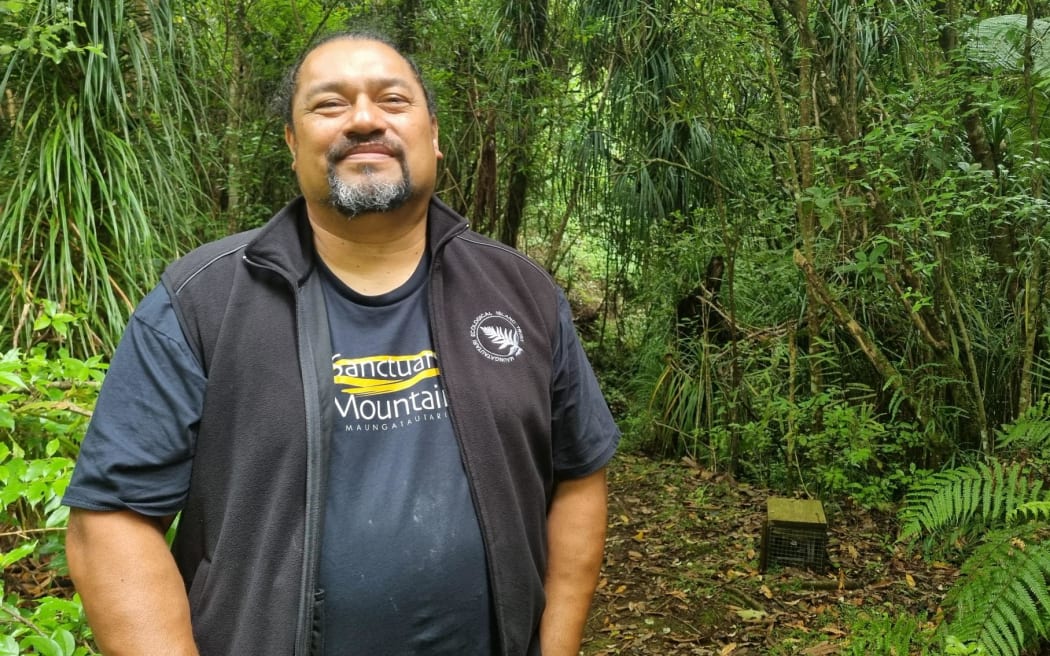
Cultural advisor educator Sanctuary Mountain Maungatautari Bodie Taylor. Photo: RNZ / Robin Martin
Sanctuary Mountain Maungatautari cultural advisor and educator Bodie Taylor said kiwi numbers had boomed at the Waikato reserve.
"There were 2500 manu was the last survey we did and that's going back a year and a bit, so it doesn't take much to know - and if you come to Maungatautari and listen out at night - that our kiwi numbers have really grown since that last survey. I would safely say there's about 3000 kiwi."
Taylor said that would not be possible without the army of volunteers, and the cooperation of hapū iwi and the surrounding landowners.
But despite the 3500 hectare size of the fully-fenced sanctuary, the kiwi population was becoming problematic.
"We could fit all the eco-sanctuaries into our sanctuary, so it's pretty amazing, but in saying that I've just mentioned we've got maybe 3000 kiwi on the mountain 1.5 hectare per kiwi, so we need to get the kiwi off."
Taylor said pest control in Te Papa-Kura-o-Taranaki was second to none and he was comfortable releasing the birds there.
The Kaitake release also marked a milestone in the relationship between Taranaki and Maungatautari hapū.
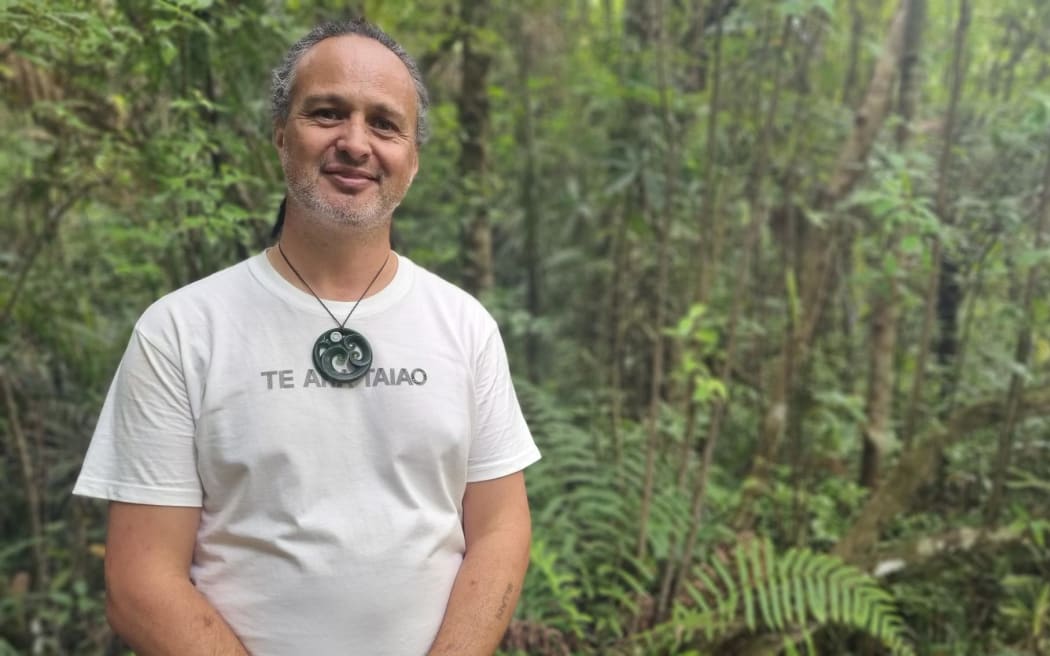
Ngā Mahanga a Tāiri hapū member Tane Manukonga. Photo: RNZ / Robin Martin
Ngā Mahanga a Tāiri hapū member Tane Manukonga said it had evolved over 20 years.
"Ngāti Koroki Kahukura received kiwi from Taranaki, Ngāti Tama, Ngāti Mutunga for their founding population up at Maungatautari and from there they've got to a position - a lovely healthy position of abundance - where they're now ready to bring their taonga and gift them to us."
He said the release was a beautiful moment.
"The experience we've had today is of that ongoing trust and belief in what we're doing is right and what we're doing is the best thing for the future.
"To have Ngāti Koroki Kahukura tamariki rangatahi handing over kiwi to our tamariki rangatahi, that is the foundation of what a good working relationship looks like."
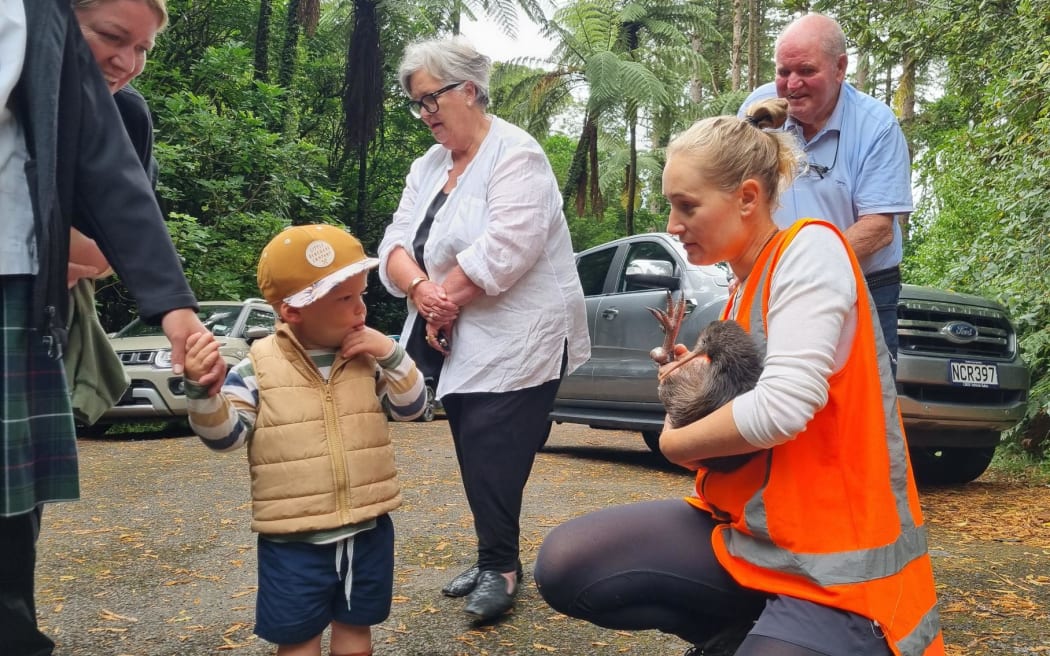
Two-year-old Jack Goodin has his first ever encounter with a kiwi. Photo: RNZ / Robin Martin
Manukonga acknowledged the work that went on to make such a release possible.
"If it wasn't for our community not just to check traps, if it wasn't for our schools and our hapū and Department of Conservation rangers, Taranaki Mounga Project to come and check traps, this particular opportunity maybe wouldn't be possible."
The exact population of kiwi on Taranaki Maunga was unknown, but it was estimated to have dropped to 30-40 pairs in the 1990s.
About 170 birds have been released over the past 18 years and many of them had paired up and had chicks.
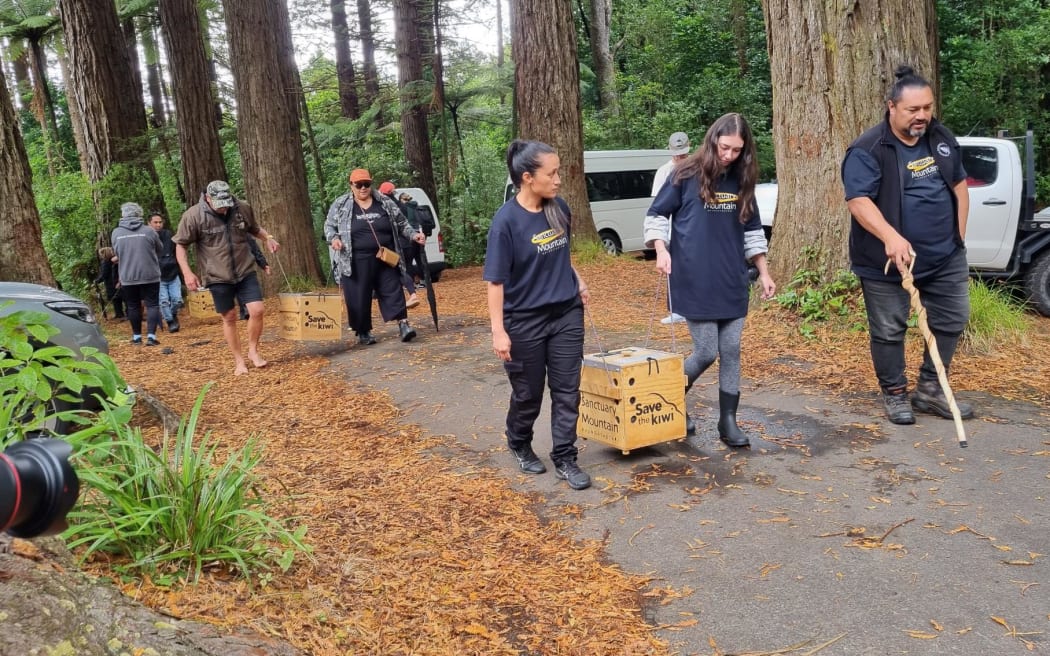
Ngāti Koroki Kahukura hapū members handover the kiwi at Kaitake. Photo: RNZ / Robin Martin
Who's who:
- Taranaki Mounga is an ambitious landscape restoration project, a partnership with iwi of Taranaki, the Department of Conservation, The Next Foundation, Toi Foundation and community groups to get rid of predators and pests from the mountain, ranges and islands of Taranaki and restore it to health.
- The project area extends from the Ngā Motu / Sugar Loaf islands to the peaks of Kaitake, Pouakai and Taranaki and over the 34,000ha of Te Papa-Kura-o-Taranaki (previously Egmont National Park).
- Volunteers and staff from Taranaki Kiwi Trust, Taranaki Kōhanga Kiwi at Rokokare, Rotokare Scenic Reserve Trust, Maungatautari Sanctuary Mountain, iwi and hapū of Taranaki and from the Waikato, Te Ara Taiao, the Kaitake Ranges Conservation Trust, Save the Kiwi, Taranaki Mounga Project, DOC and local schools are involved with increasing kiwi on Taranaki Maunga.
